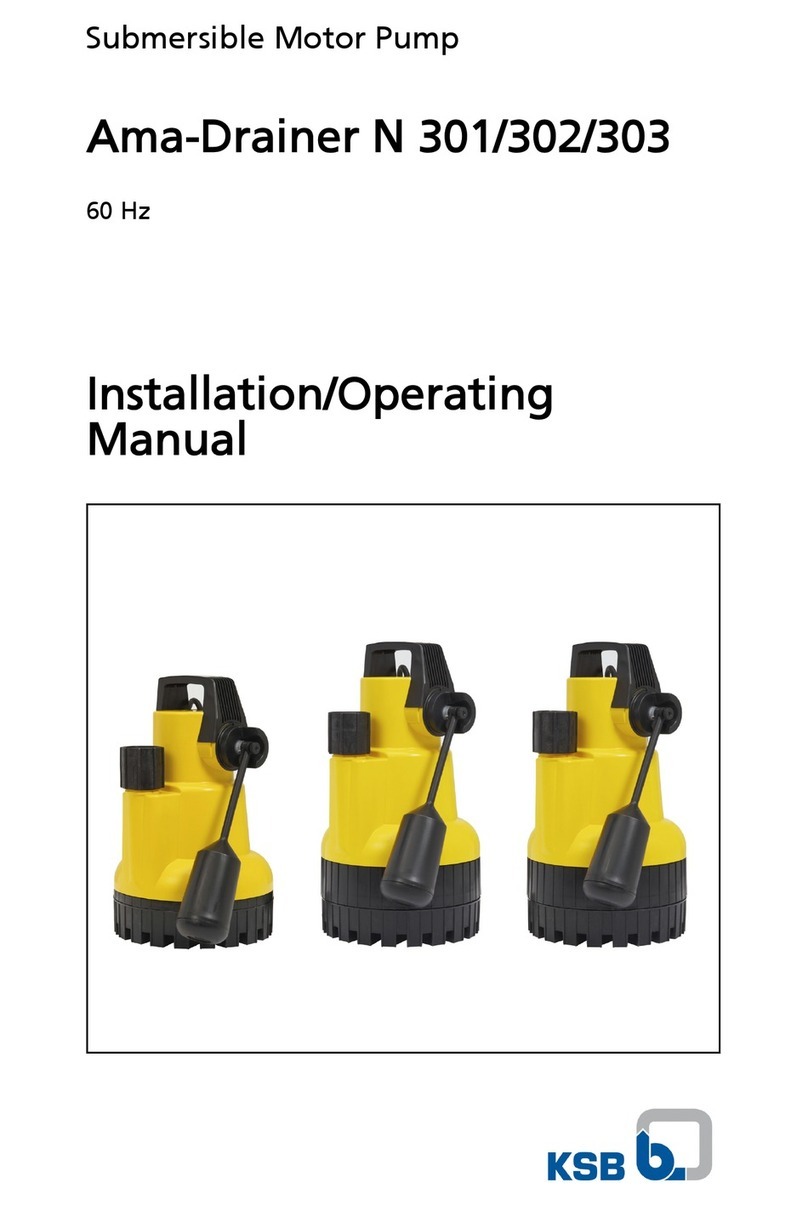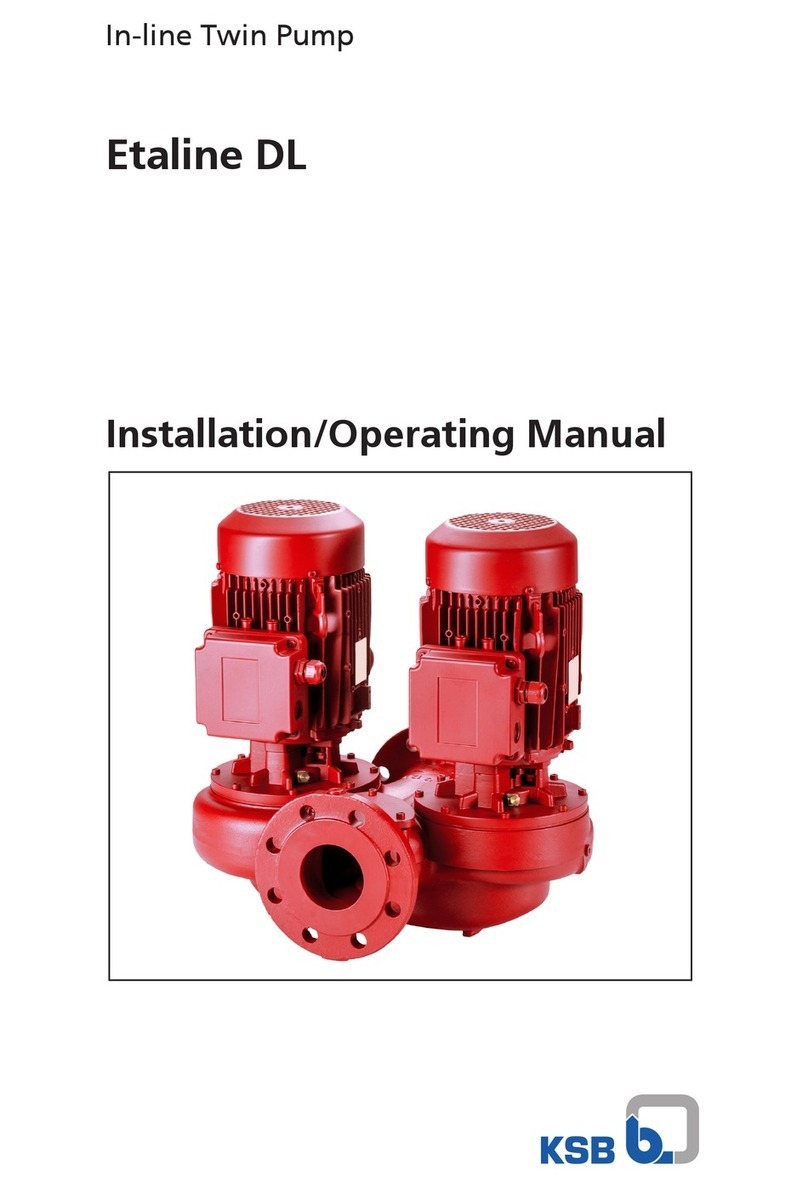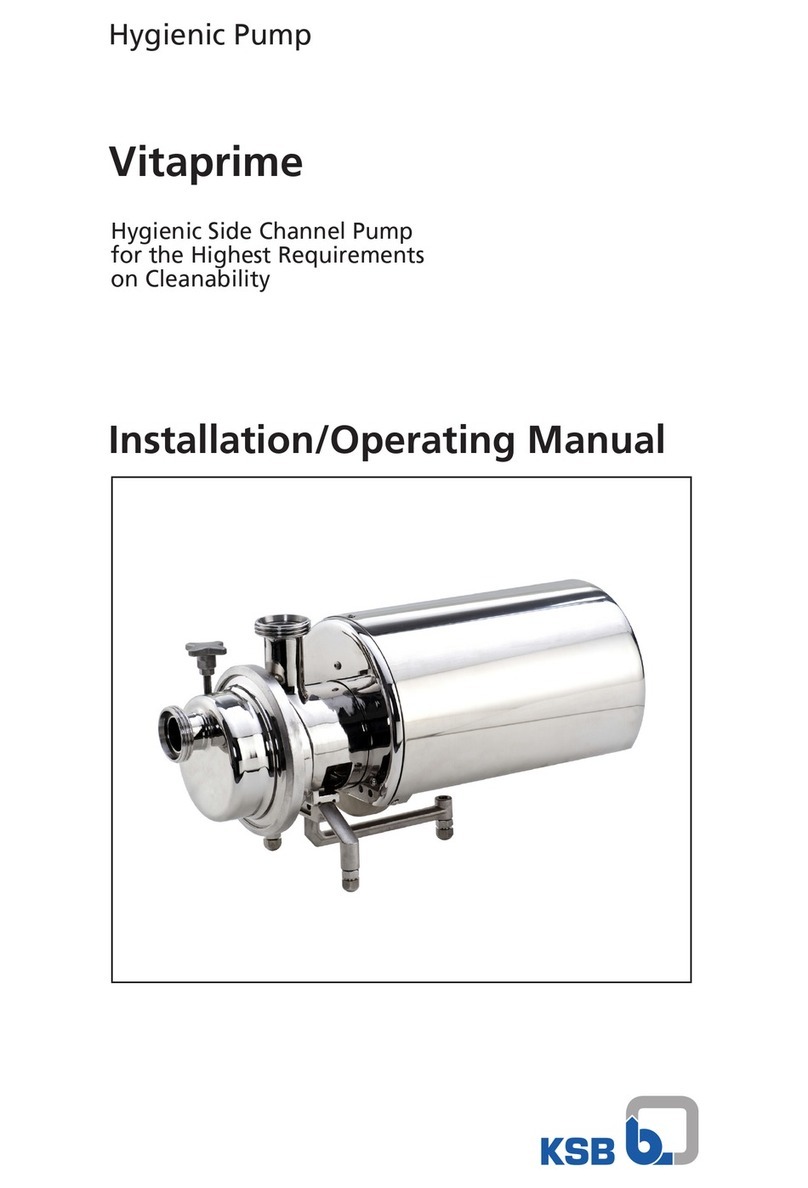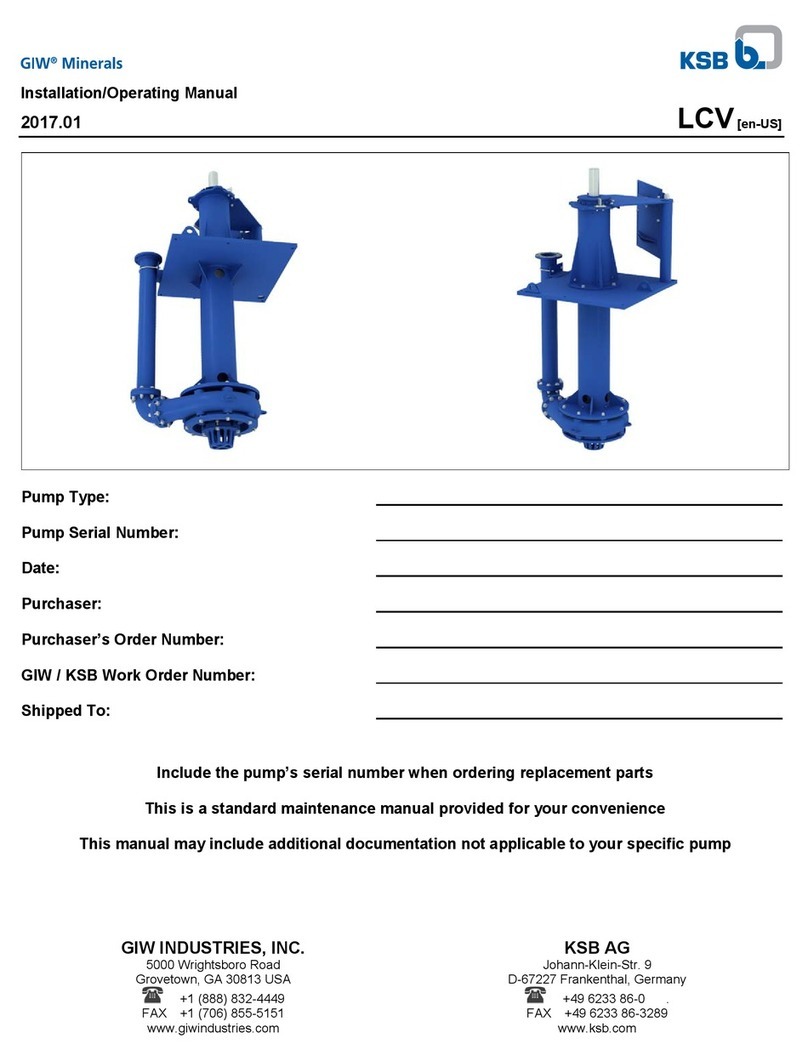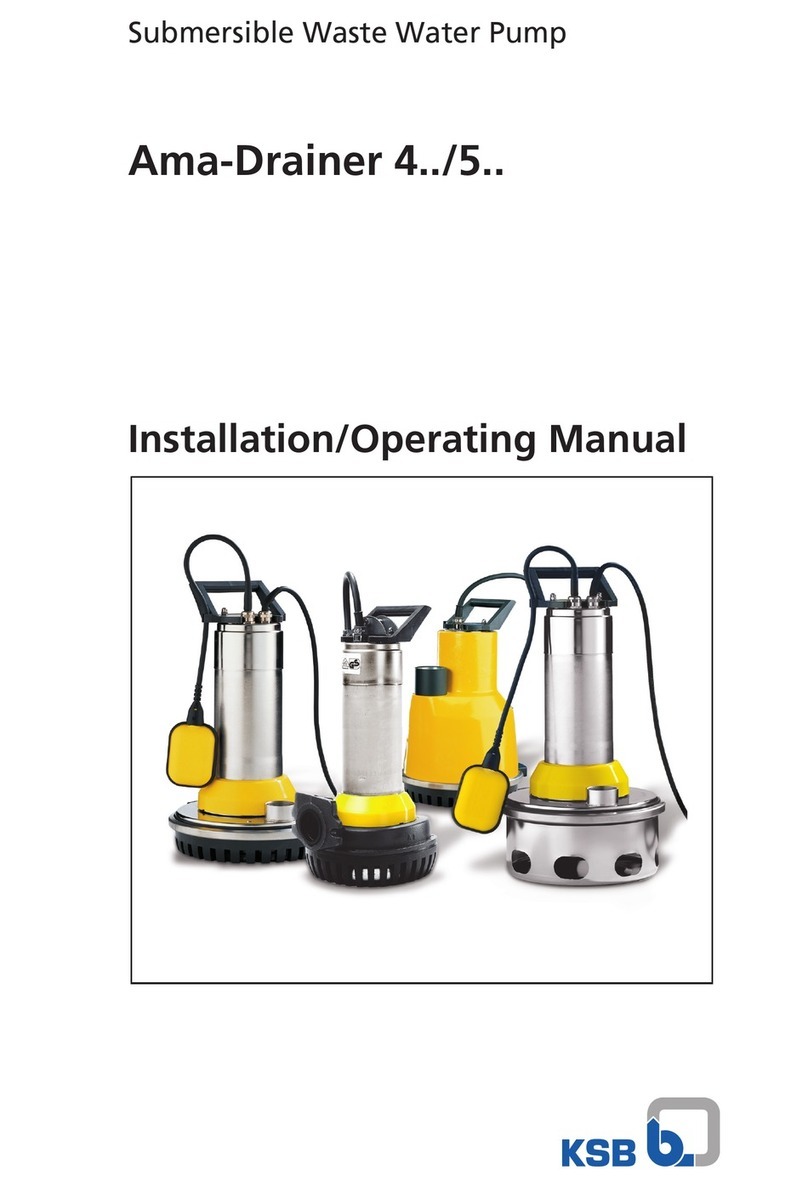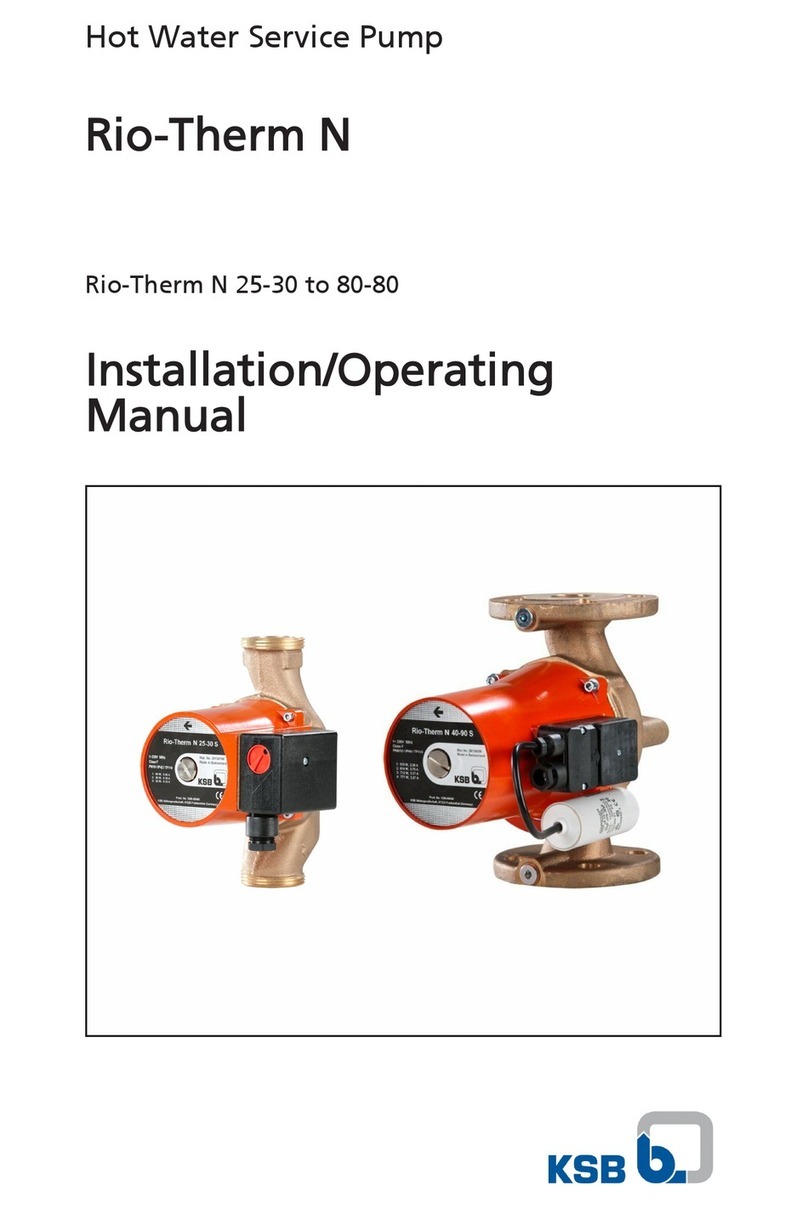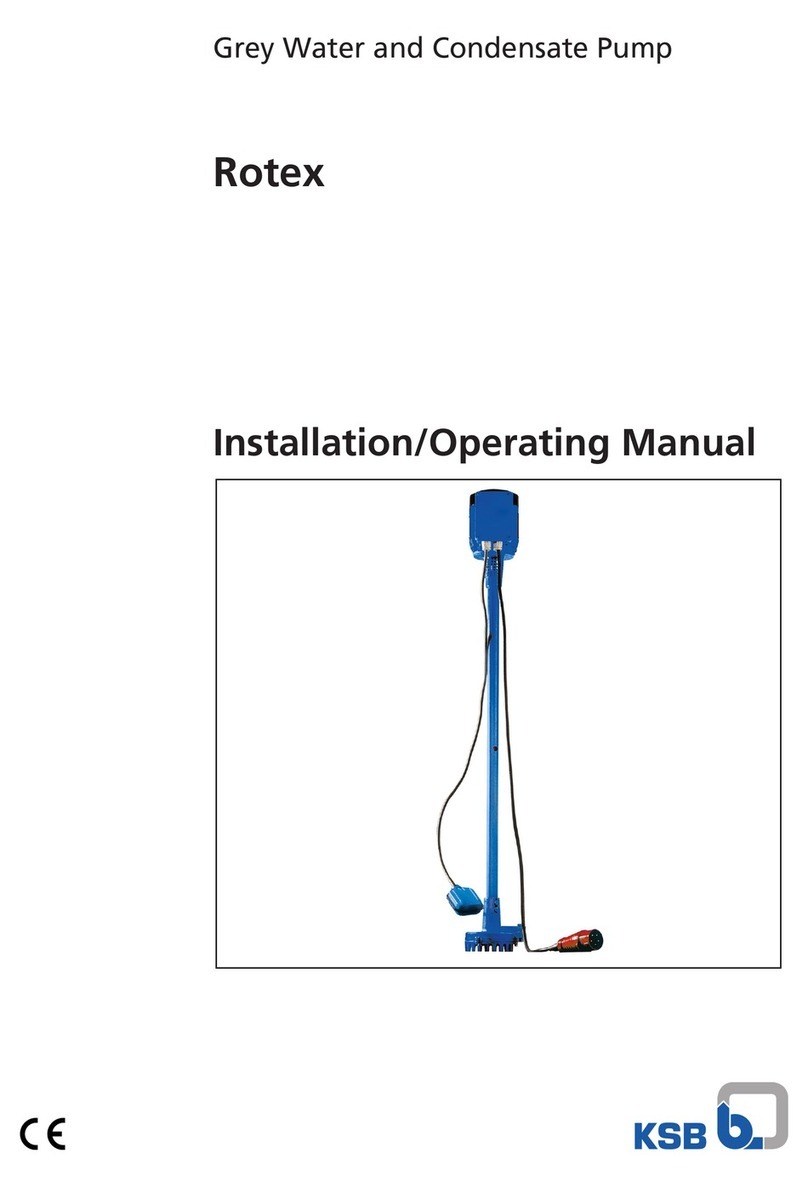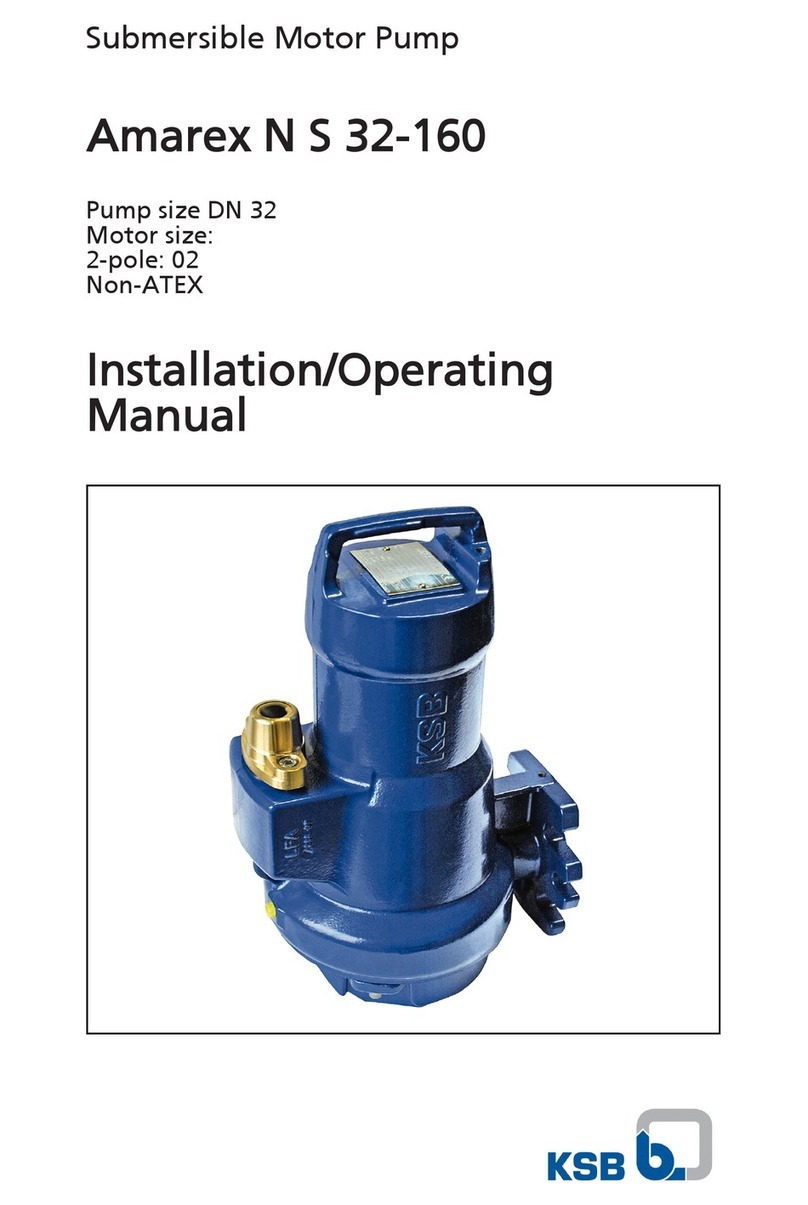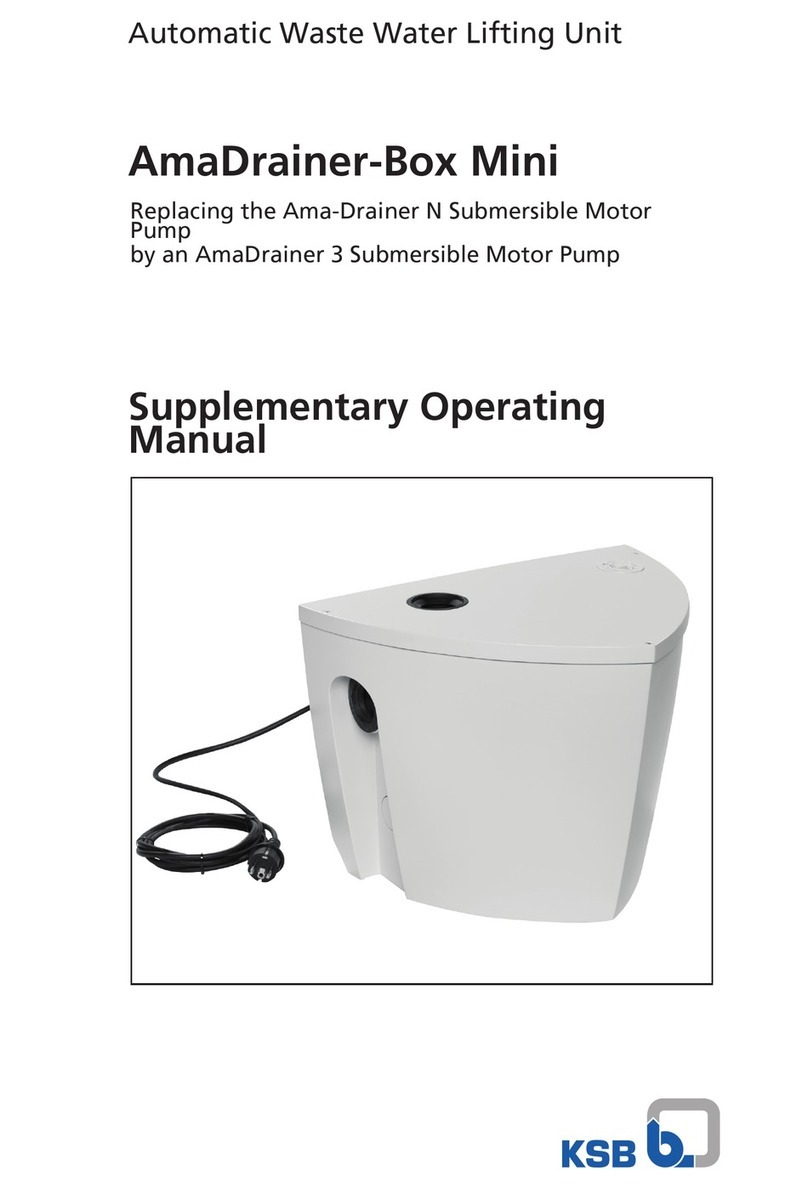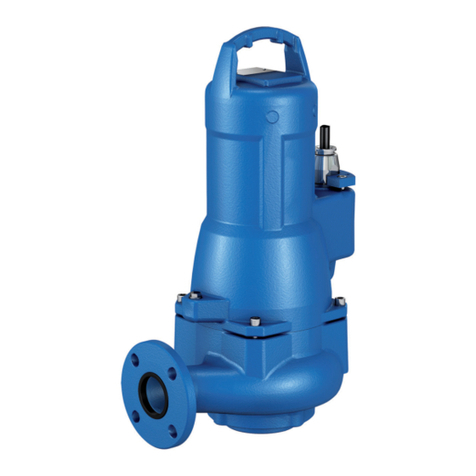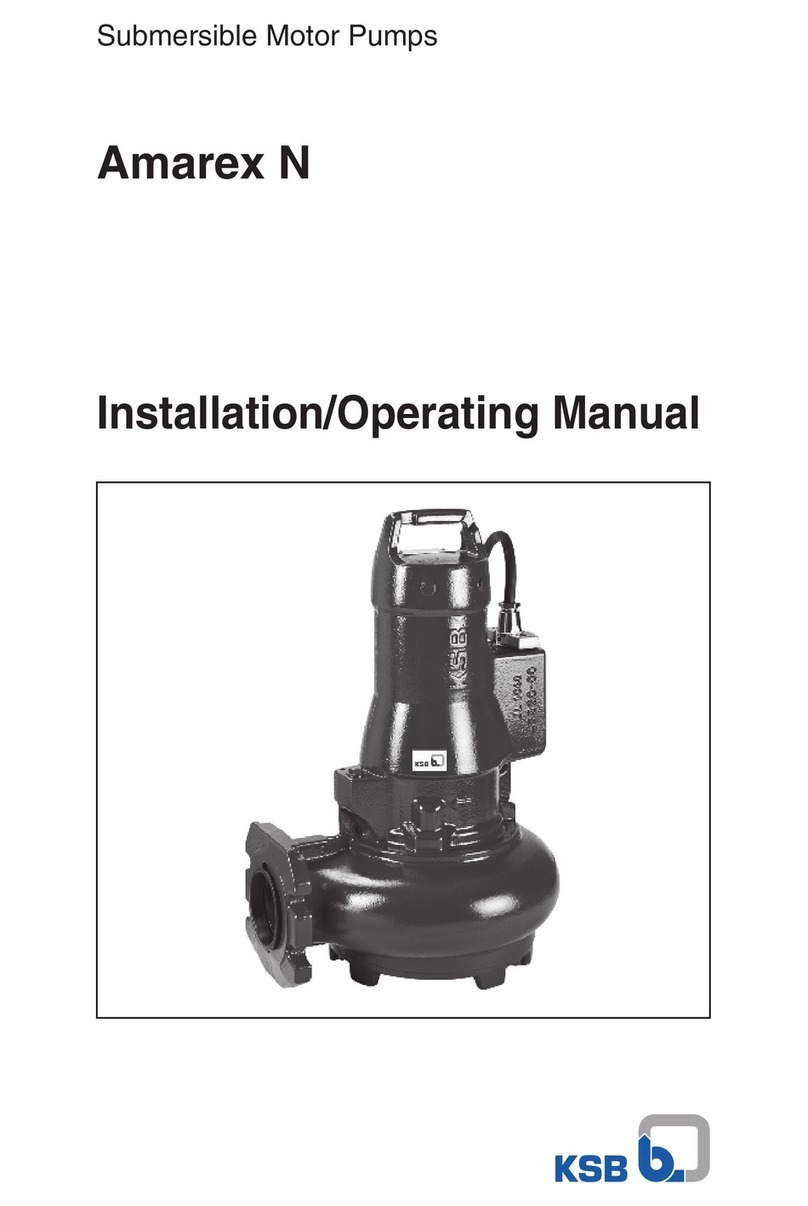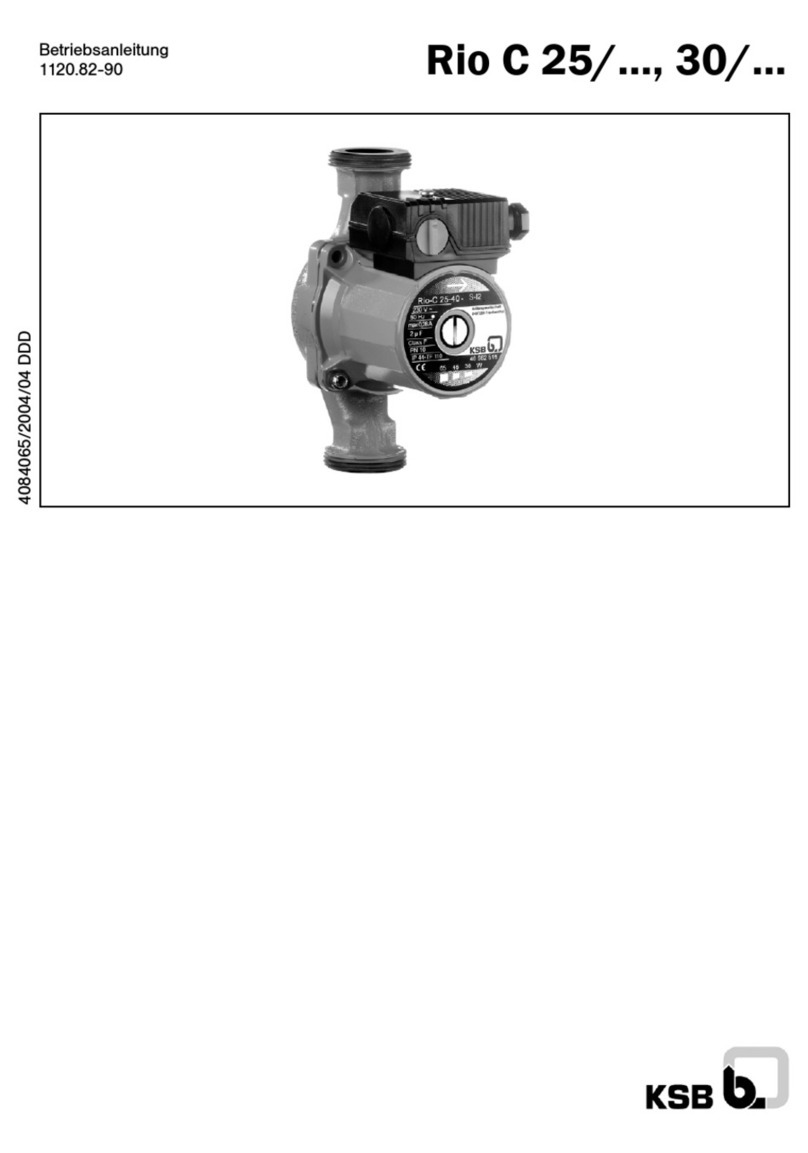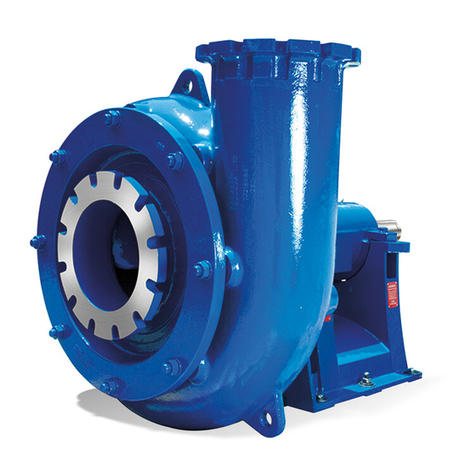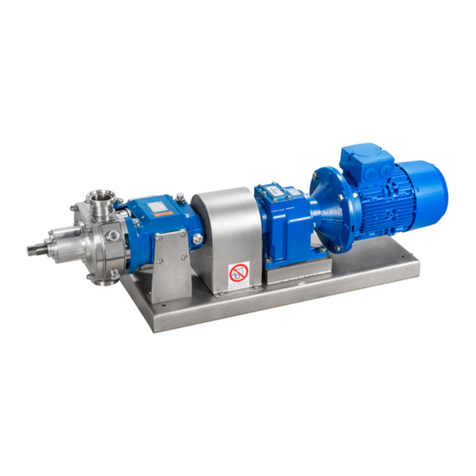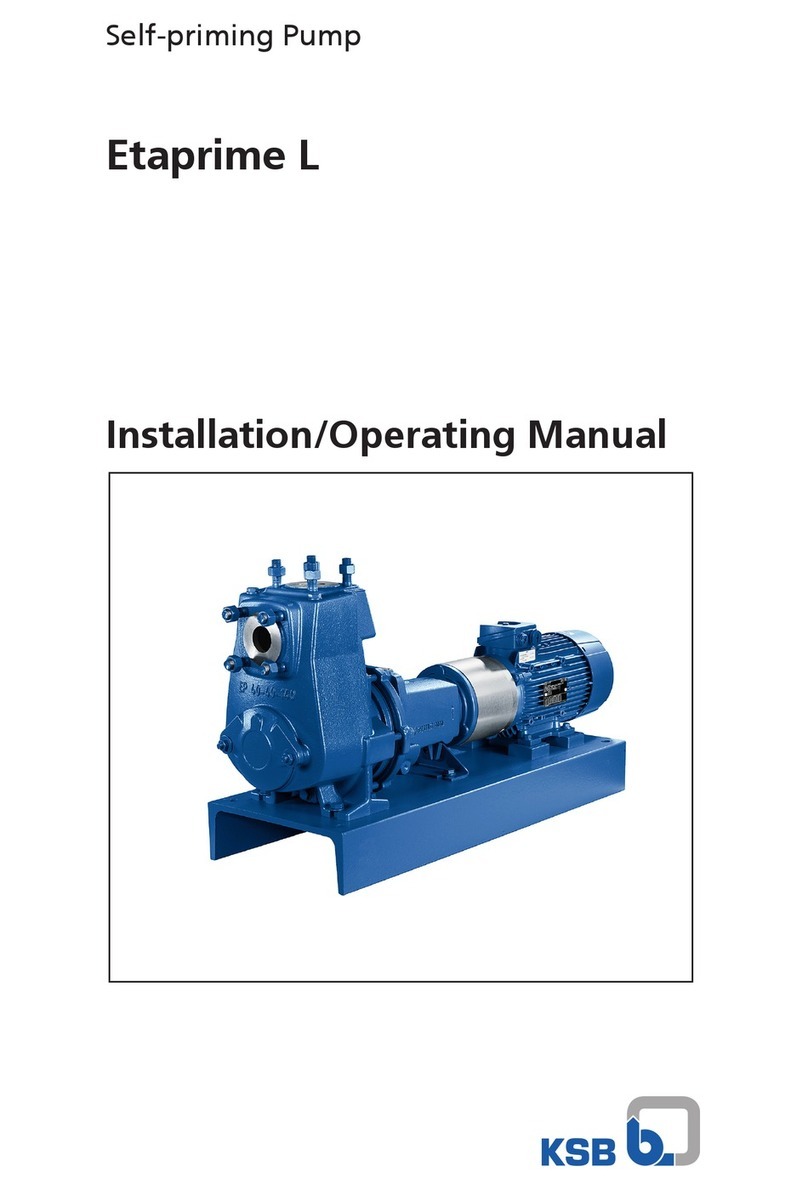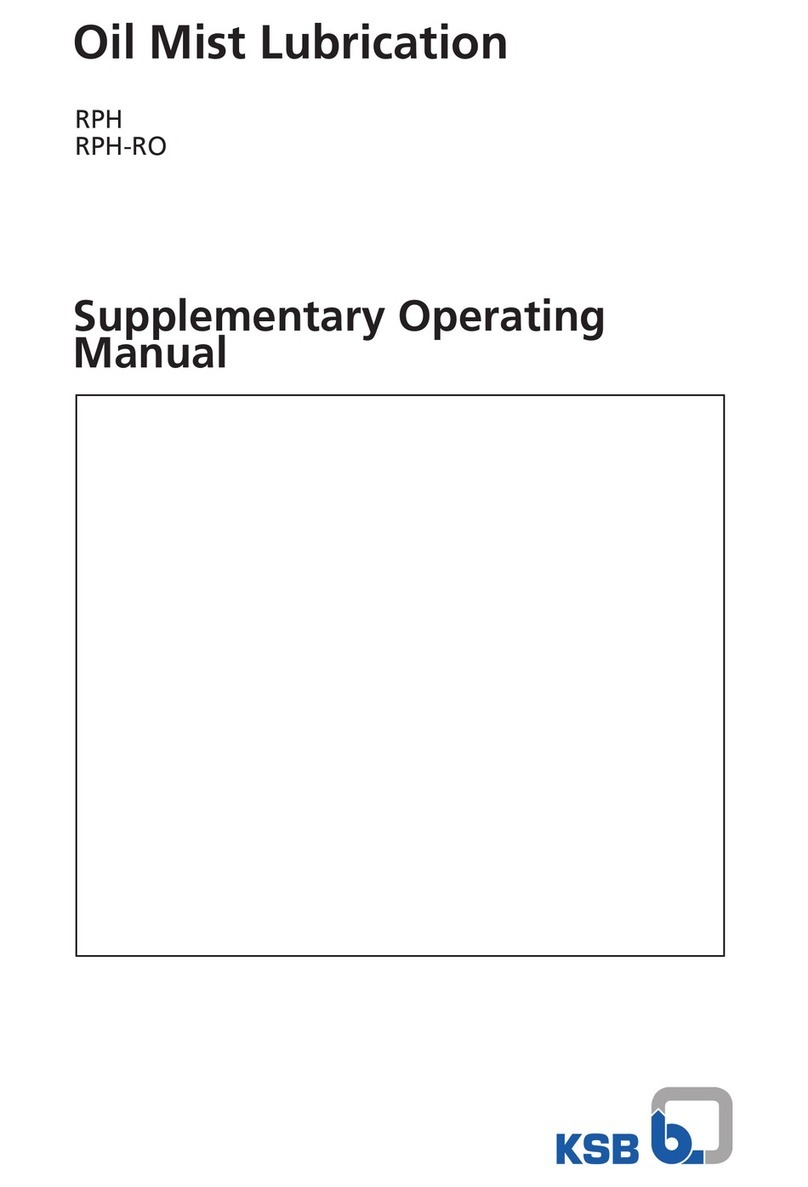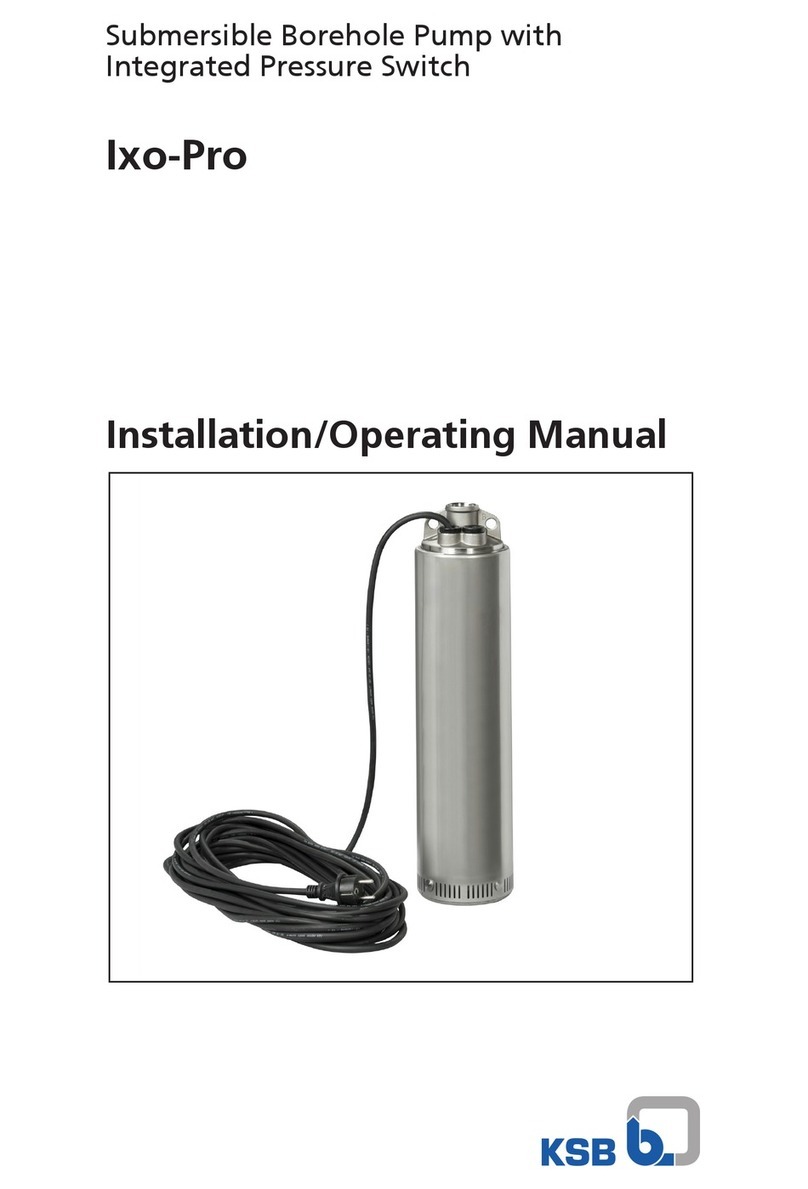
RPH-V
5
-Guards which are fitted to prevent accidental contact
with moving parts (e.g. coupling) must not be
removed whilst the unit is operating.
-Leakages (e.g. at the shaft seal) of hazardous fluids
handled (e.g. explosive, toxic, hot) must be contained
so as to avoid any danger to persons or the
environment. All relevant laws must be heeded.
-Electrical hazards must be eliminated. (In this
respect refer to the relevant safety regulations
applicable to different countries and / or the local
energy supply companies.)
-Any components in contact with the fluid pumped,
especially in the case of abrasive fluids, shall be
inspected for wear at regular intervals and replaced
by original spare parts (see section 2.7) in due time.
If the pumps / units are located in hazardous
areas, it is imperative to make sure that
unauthorized modes of operation are prevented. Non–
compliance may result in the specified temperature limits
being exceeded.
2.6 Safety instructions for maintenance, inspection
and installation work
The operator is responsible for ensuring that all
maintenance, inspection and installation work be
performed by authorized, qualified specialist personnel
who are thoroughly familiar with the manual.
The pump must have cooled down to ambient
temperature, pump pressure must have been released
and the pump must have been drained.
Work on the machine / unit must be carried out only
during standstill. The shutdown procedure described in
the manual for taking the unit out of service must be
adhered to without fail.
Pumps or pump units handling fluids injurious to health
must be decontaminated.
Immediately following completion of the work, all safety-
relevant and protective devices must be re-installed and /
or re-activated.
Please observe all instructions set out in the chapter on
“Commissioning” before returning the unit to service.
2.7 Unauthorized modification and manufacture of
spare parts
Modifications or alterations of the equipment supplied are
only permitted after consultation with the manufacturer
and to the extent permitted by the manufacturer. Original
spare parts and accessories authorized by the
manufacturer ensure safety. The use of other parts can
invalidate any liability of the manufacturer for
consequential damage.
2.8 Unauthorized modes of operation
The warranty relating to the operating reliability and
safety of the unit supplied is only valid if the equipment is
used in accordance with its designated use as described
in the following sections. The limits stated in the data
sheet must not be exceeded under any circumstances.
2.9 Explosion protection
If the pumps / units are installed in hazardous
areas, the measures and instructions given in
the following sections 2.9.1 to 2.9.6 must be adhered to
without fail, to ensure explosion protection.
2.9.1 Unit fill
It is assumed that the system of suction and
discharge lines and thus the wetted pump
internals are completely filled with the product to be
handled at all times during pump operation, so that an
explosive atmosphere is prevented.
If the operator cannot warrant this condition,
appropriate monitoring devices must be used.
In addition, it is imperative to make sure
that the seal chambers, auxiliary
systems of the shaft seal and the heating and cooling
systems are properly filled.
2.9.2 Marking
The marking on the pump only refers to the pump
part, i.e. the coupling and motor must be
regarded separately. The coupling must have an EC
manufacturer’s declaration. The driver must be regarded
separately.
Example of marking on the pump part:
Ex II 2 G T1 - T5
The marking indicates the theoretically available
temperature range as stipulated by the respective
temperature classes. The temperatures permitted for the
individual pump variants are outlined in section 2.9.5.
Pumps RPH-V are designed to meet the requirements of
Zone 1 and Category 2 as per EN1127-1.
2.9.3 Checking the direction of rotation
(see also 6.1.4)
If the explosion hazard also exists during the
installation phase, the direction of rotation must
never be checked by starting up the unfilled pump unit,
even for a short period, to prevent temperature increases
resulting from contact between rotating and stationary
components.
2.9.4 Pump operating mode
Make sure that the pump is always started up with the
suction-side shut-off valve fully open and the discharge-
side shut-off valve slightly open. However, the pump can
also be started up against a closed swing check valve.
The discharge-side shut-off valve shall be adjusted to
comply with the duty point immediately following the run-
up process (see 6.1.7).
Pump operation with the shut-off valves in the
suction and / or discharge pipes closed is not
permitted.
In this condition, there is a risk of the
pump casing taking on high surface
temperatures after a very short time, due to a rapid
temperature rise in the pumped fluid inside the pump.
Additionally, the resulting rapid pressure build-up inside
the pump may cause excessive stresses on the pump
materials or even bursting.
The minimum flows indicated in section 6.2.5 refer to
water and water-like liquids. Longer operating periods
with these liquids and at the flow rates indicated will not
cause an additional increase in the temperatures on the
pump surface. However, if the physical properties of the
fluids handled are different from water, it is essential to
check if an additional heat build-up may occur and if the
Caution
Caution
